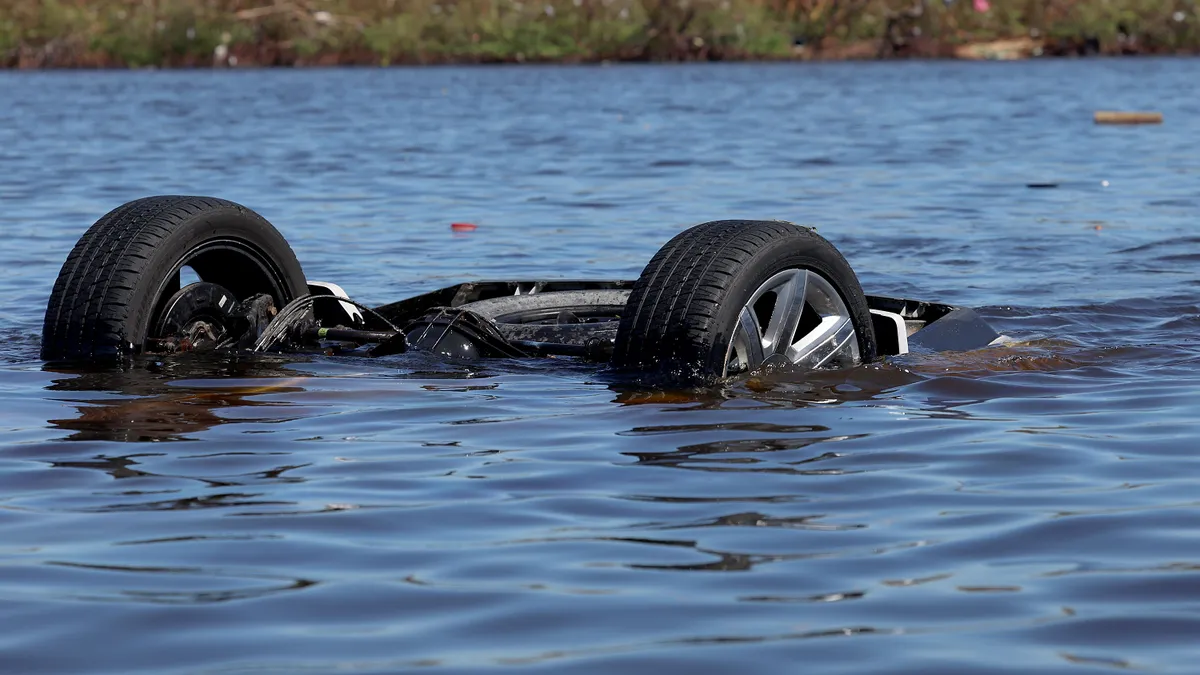First responders in Florida reported battery fires in electric vehicles that had been submerged in salty water from Hurricane Ian, according to a letter last week from the state’s chief financial officer and fire marshal, Jimmy Patronis, to more than 30 EV manufacturers. He said that he personally observed an “EV fire that continuously reignited” as it was being fought by firefighters.
“From my experience in traveling the state, there were a tremendous amount of Electronic Vehicles in this part of Florida, and we now know for a fact that any EV that was submerged in saltwater is a fire risk,” Patronis said in the letter.
In response, National Highway Traffic Safety Administration Executive Director Jack Danielson wrote to Patronis, saying, “We are tracking Florida EV fires through news reports, fire department social media sites, and other sources.” Danielson added that Patronis’ observations did not appear to be an isolated incident.
Most hybrid-electric and battery-electric passenger vehicles use lithium-ion batteries, the same technology that powers laptop computers and cell phones, but the large power banks in electric vehicles can produce 100 to 600 volts to power the vehicle’s traction motors.
Fires are not just a concern in the presence of floods. Batteries can overheat, and crashes may damage the batteries, causing fires.
In August 2021, General Motors recalled all Chevrolet Bolt electric vehicles “due to the risk of the high-voltage battery pack catching fire,” according to an NHTSA alert. Owners were also warned to park their vehicles outside and away from structures. In recent months, recalls have been issued related to battery fires, overheating or failures involving vehicles from BMW and Ford. NHTSA opened an investigation in April into electric vehicle batteries produced by LG Energy Solution following failures in several vehicle models that resulted in fire risks and recalls.
Florida Republican Sen. Rick Scott sent letters to Transportation Secretary Pete Buttigieg and electric vehicle makers calling the battery fires an “emerging threat [that] has forced local fire departments to divert resources away from hurricane recovery to control and contain these dangerous fires.”
Joe Britton, executive director of the Zero Emission Transportation Association, believes the risk is being overstated but acknowledged the concern of diverting first responders to deal with vehicle fires in addition to disaster and recovery efforts.
But, he added, “The record is pretty dramatically a different story.” There are about 95,000 electric vehicles registered in Florida, according to the U.S. Department of Energy, and according to the Florida Phoenix, at least six EVs caught fire following the hurricane. “The odds that your electric battery pack is on fire in Florida are about the same odds of you getting struck by lightning,” Britton said.
The larger issue may be the training and information needed by first responders as the population of electric vehicles continues to grow. Patronis asked NHTSA about the need for personal protective equipment, guidance on where damaged EVs should be taken and how long it may take for damaged batteries to ignite.
In its response, NHTSA referred Patronis to a 2014 interim guidance document on vehicles with high-voltage batteries, specific information for Tesla vehicles and training available through the National Fire Protection Association for first responders.
An investigation into EV battery fires by the National Transportation Safety Board recommended in a 2020 report that automakers include vehicle-specific information on fighting high-voltage battery fires. According to Repairer Driven News, a publication for the collision repair industry, eight of 22 EV auto manufacturers had updated their emergency response guides as of June 2022, with 12 others “making progress.”
















